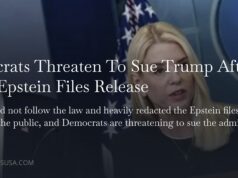The Seven-Front Campaign That Redefined Deterrence.
This was a campaign born from the necessity of national survival. In June 2025, as Iran approached nuclear breakout and initiated coordinated proxy attacks, Israel launched a large-scale air campaign designed to neutralize the threat before it could be fully realized.
Pilots received encrypted alerts through secure command systems, ground forces coordinated via protected channels, and unmanned aerial systems operated with precision over high-value targets near Esfahan.
The objective was to prevent the operationalization of Iran’s nuclear capabilities. This action reflected the strategic imperative to eliminate existential threats in accordance with long-standing Israeli defense doctrine.
The Trigger: Enrichment Beyond the Threshold.
IAEA inspectors and Western intelligence confirmed in May 2025 that Iran possessed uranium enriched to sixty percent, approaching weapons-grade levels.
Diplomatic channels had stalled, and cyber sabotage had yielded diminishing returns. Israel executed surgical strikes against three categories of targets: the enrichment facilities at Natanz and Fordow, the centrifuge manufacturing hub at Esfahan, and newly reinforced bunkers near Kuh-e Kolang Gaz La.
These operations, supported by satellite imagery and electronic warfare assets, inflicted irreversible damage on Iran’s nuclear infrastructure.
The Collapse of the JCPOA and Strategic Doctrine.
The failure of the Joint Comprehensive Plan of Action (JCPOA), originally built upon the 2013–2015 Joint Plan of Action (JPOA) under President Barack Obama, served as the strategic backdrop to Israel’s 2025 campaign.
Despite international monitoring mechanisms and phased sanctions relief, Iran methodically circumvented restrictions through proxy transfers, covert enrichment sites, and regional destabilization efforts. By 2025, Tehran had stockpiled enriched uranium and reconstructed its missile delivery architecture and hardened its nuclear infrastructure.
For Israel, the collapse of the Obama-era JPOA proved what it had long warned: diplomacy without enforceable red lines enables delay, not denial.
U.S. Caution Versus Israeli Urgency.
Despite public alignment with Israel’s right to defend itself, the Biden administration repeatedly signaled unease with Israeli escalation during 2024. Multiple senior Israeli officials alleged that Washington quietly urged restraint in potential strikes against Hamas, Hezbollah, and most notably Iran’s nuclear infrastructure.
Intelligence leaks later confirmed that Iranian operatives had plotted to assassinate both a sitting presidential candidate and former President Donald J. Trump—a fact acknowledged by U.S. law enforcement and counterintelligence agencies by late 2024 (Department of Justice, 2024; ODNI, 2025).
Political Consensus and National Defense.
Internally, the Israeli cabinet invoked emergency national defense statutes under near-unanimous political consensus. This decision, endorsed by both coalition and opposition figures, reflected the broadest wartime unity since the 1973 Yom Kippur War (Haaretz, 2025). Despite internal turmoil over judicial reforms and civil-military tensions, the Iranian nuclear threat galvanized national priorities around survival and deterrence.
Decapitation Strategy: Neutralizing Iran’s Military Command.
Within five days, Israel struck more than 140 military sites. The list included IRGC missile depots in Kermanshah, S-300 and S-400 air-defense batteries near Tehran, and airbases at Mehrabad, Shiraz, and Mashhad. The campaign also eliminated Maj. Gen. Mohammad Bagheri, Iran’s Chief of General Staff (Associated Press, 2025). These decapitation strikes, guided by Israeli HUMINT and drone surveillance, disrupted command continuity and paralyzed retaliatory planning. Among the dead were senior coordinators of Iran’s underground enrichment strategy and missile logistics network.
Proxy Collapse: The Limits of Iran’s Extended Reach.
Iran’s Axis of Resistance was activated in parallel. Hezbollah fired cross-border rockets from Lebanon, the Houthis targeted shipping in the Gulf of Aden, and Iraqi militias attacked U.S. forces with drones. Israeli and U.S. assets intercepted the majority of threats across all fronts. In the Gulf of Aqaba, U.S. Aegis-equipped destroyers and Israeli Iron Dome batteries jointly neutralized a salvo of cruise missiles launched from Yemen (Reuters, 2025b). In Lebanon, Iron Beam prototypes destroyed incoming UAVs near Kiryat Shmona.
Diplomatic Reverberations and Shifting Alliances.
Gulf States responded with quiet alignment. Saudi Arabia, the UAE, and Bahrain reinforced their own defenses but did not condemn Israel. Jordan and Egypt tightened security without taking sides. In contrast, the European Union and the United Nations condemned Israel for disproportionate force while failing to acknowledge Iran’s ballistic missile fire (EU Parliament, 2025; UN News, 2025; UN Security Council, 2025). Russia expressed symbolic support for Tehran, while China called for de-escalation (Xinhua, 2025).
Netanyahu’s Doctrine: Strategic Clarity Over Consensus.
Prime Minister Benjamin Netanyahu had warned for decades about Iran’s nuclear ambitions. In 2025, he acted. His leadership coordinated air, land, sea, and cyber operations in a seven-front conflict that crippled Iran’s military and set back its nuclear timeline (Romero, 2025).
Divergent Assessments: Israel’s Urgency Versus U.S. Intelligence.
The 2025 U.S. Annual Threat Assessment judged Iran’s weapons program as dormant and several years from weaponization (ODNI, 2025). This came despite earlier warnings by Gen. Mark Milley and Secretary of State Antony Blinken in 2023 and 2024 (Blinken, 2024; Holsey, 2025).
U.S. Military Lessons: Strike Doctrine, ISR, and Integrated Defense
Israel’s 2025 campaign offers six military lessons for U.S. planners: 1) Strike timing and doctrine eclipse warning signs. 2) Air superiority must be paired with internal disruption. 3) Ballistic missile defense must be proactive. 4) Multi-domain command and control must remain functional in isolation. 5) Deterrence is rebuilt by decisive action. 6) Intelligence remains the decisive domain (Fulton, 2024).
Conclusion: Deterrence Redefined and the Price of Delay.
Israel’s 2025 campaign reshaped the strategic landscape. It exposed the limits of diplomacy, reaffirmed the utility of preemption, and demonstrated the decisive role of intelligence-driven airpower. In the absence of a multilateral will, Israel acted alone and ensured its survival. Iran’s nuclear infrastructure has been degraded, but not eliminated. Tehran may pivot toward asymmetric retaliation and regional destabilization. The future balance of power in the Middle East will depend on whether Iran rebuilds, fractures, or adapts.
About The Author










